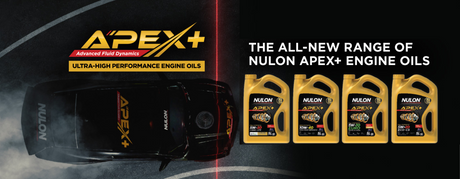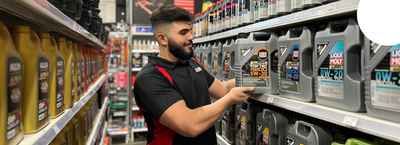When it comes to keeping your vehicle in pristine condition, nothing quite compares to a fresh coat of paint. Whether you're addressing minor scratches or planning a full makeover, understanding how to find your car's paint code and ensuring accurate colour matching is a skill every car owner should have in their toolbox. In this comprehensive guide, Universal Auto Spares will walk you through the process step by step, ensuring your vehicle looks its best from every angle.
Table of Contents:
- Understanding the Importance of Paint Codes
-
Locating Your Paint Code
- On the Manufacturer's Label
- Inside the Driver's Door Frame
- In the Engine Bay
- Decoding the Paint Code
-
Colour Matching Techniques
- Using Sample Cards
- Digital Colour Matching Tools
- Seeking Professional Assistance
-
Preparing for Painting
- Cleaning and Sanding
- Primer Application
- Application Tips for a Flawless Finish
- Final Thoughts and Maintenance
Understanding the Importance of Paint Codes: Your car's paint code is like its DNA, uniquely identifying the exact colour and shade of paint used during manufacturing. Whether you're touching up a minor blemish or performing a major paint job, having the correct paint code ensures a seamless and professional result. Avoid mismatched shades and achieve a factory-fresh look by nailing down your car's paint code.
Locating Your Paint Code: Manufacturers place paint codes in various locations, often near the driver's side door jamb, the glove compartment, or the engine bay. Checking the owner's manual or contacting your vehicle manufacturer's customer service can also provide valuable information about the code's whereabouts.
Decoding the Paint Code: Paint codes typically consist of letters and numbers. The letters represent the colour name, while the numbers provide information about the formula and shade. Using a reliable online paint code database or consulting your vehicle manufacturer's website can help you decode the paint code accurately.
Colour Matching Techniques: Achieving a perfect colour match is crucial for a seamless finish. You have a few options:
- Using Sample Cards: Many automotive stores offer sample paint cards that allow you to visually compare colours to your vehicle's existing paint.
- Digital Colour Matching Tools: Advanced technology can scan your car's paint and match it to the closest available shade in their database.
- Seeking Professional Assistance: When in doubt, consult with professional painters or auto body shops for expert advice on colour matching.
Preparing for Painting: Before applying paint, proper preparation is key. Clean the surface thoroughly, remove any rust or debris, and sand the area to ensure a smooth canvas. Applying a primer also helps the paint adhere better and improves the overall finish.
Application Tips for a Flawless Finish: When applying paint, follow these guidelines:
- Test Before Applying: Always test the paint on a small inconspicuous area to ensure it matches and adheres well.
- Thin Coats: Apply paint in thin, even coats to prevent drips and achieve a consistent finish.
- Sand Between Coats: Gently sand the surface between coats for better adhesion and a smoother finish.
- Clear Coat: Applying a clear coat after the paint has dried enhances the gloss and provides additional protection.
Final Thoughts and Maintenance: Once you've successfully applied your paint, proper maintenance is essential to preserve the finish. Regular washing, waxing, and avoiding exposure to harsh elements will keep your newly painted areas looking sharp for years to come.
Mastering the art of finding your car's paint code and achieving perfect colour matching is a valuable skill that can save you money and ensure your vehicle always looks its best. Armed with this knowledge and guidance from Universal Auto Spares, you're well-equipped to tackle paint touch-ups and transformations with confidence. Remember, a well-maintained paint job not only enhances the aesthetics but also adds to the overall value of your cherished vehicle. Happy painting!









